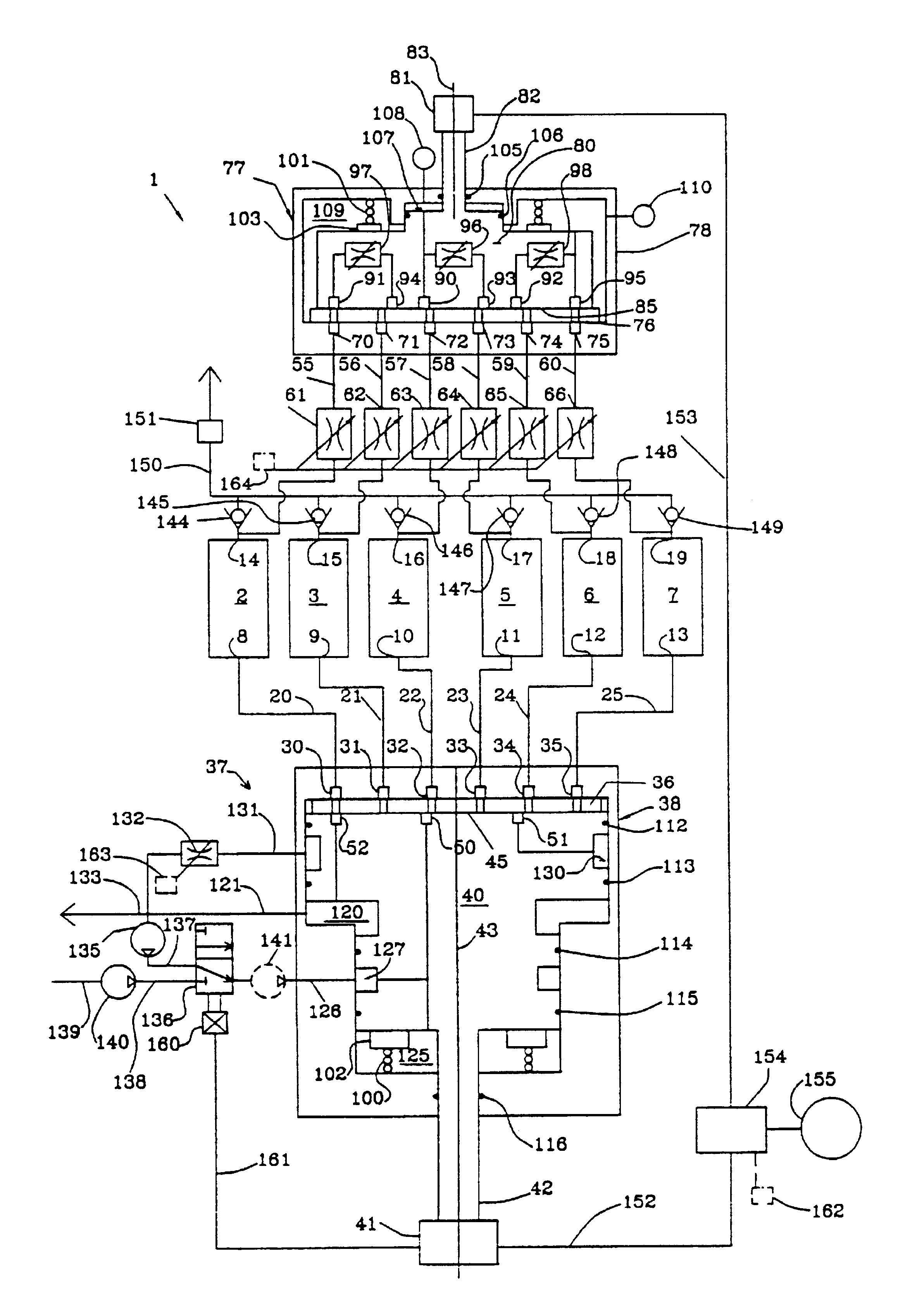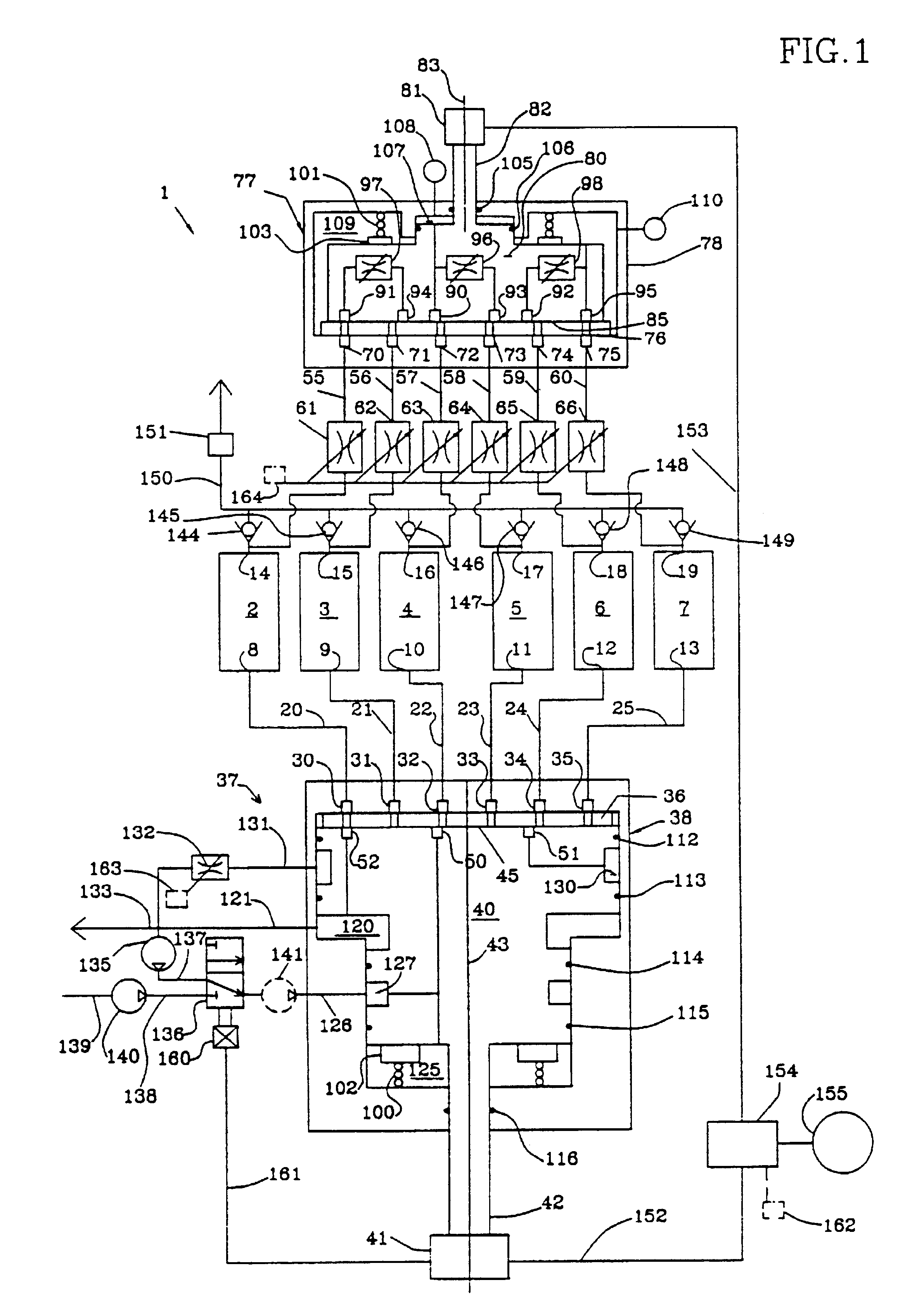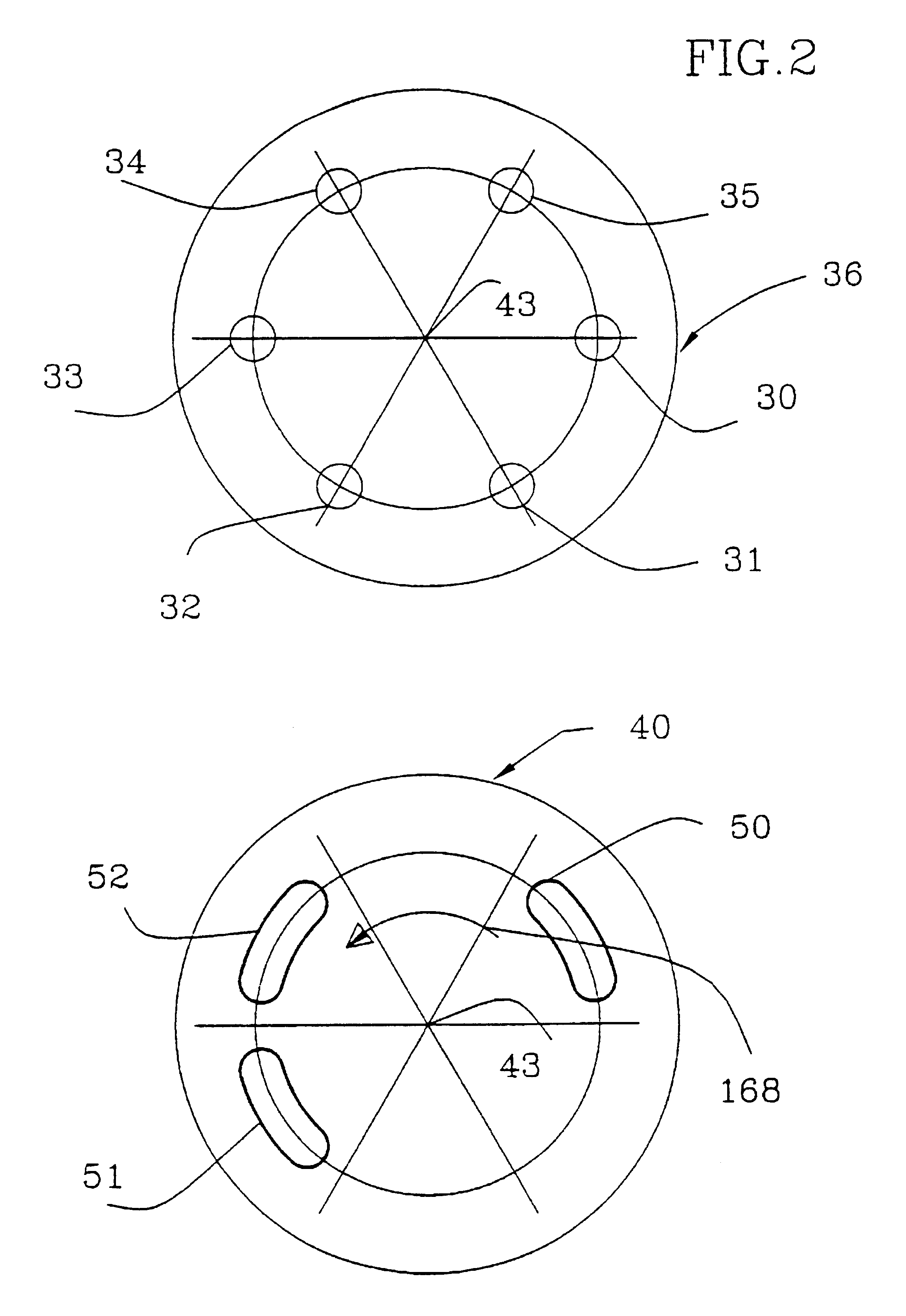Flow regulated pressure swing adsorption system
a pressure swing and adsorption technology, applied in the field of separation, can solve the problems of inability to mechanically immobilize the adsorbent bed, inability to achieve rotary adsorbent bed assembly, and complicated valve logic and control
- Summary
- Abstract
- Description
- Claims
- Application Information
AI Technical Summary
Benefits of technology
Problems solved by technology
Method used
Image
Examples
embodiment 1
FIG. 10 is a schematic drawing of an alternative second distributor valve 400 with control means for the adjustable orifices of the rotor as configured for embodiment 1 of FIG. 1. Adjustable orifices 96-98 are provided as throttle valves mounted in rotor 80, each with identical or similar external actuation means, described here in detail for adjustable orifice 97. Light reflux withdrawal port 91 communicates by conduit 401 to upstream valve chamber 402. Chamber 402 is penetrated by valve stem 405 with coaxial needle 406 aligned with valve seat 408. The adjustable throttle valve orifice is defined between needle 406 and seat 408, and provides fluid communication with downstream valve chamber 410 which in turn communicates by conduit 412 to light reflux return port 94.
Drive end 414 of valve stem 405 is isolated from process fluid by seal 415, and is provided with a drive pin 416 penetrating a drive slot 417 in rotor 80. Slot 417 has axial clearance for pin 416, sufficient for movemen...
embodiment 450
An alternative embodiment 450 of the second distributor valve uses fluid transfer chambers between the rotor 80 and the stator housing 78, so that the adjustable orifices can be provided as throttle valves external to the stator housing.
On a common sealing diameter, rotary seals 451, 452, 453, 454 and 455 mutually isolate chamber 107 communicating in rotor 80 to light reflux withdrawal port 90 at substantially the higher pressure, transfer chamber 461 communicating to light reflux return port 93, transfer chamber 462 communicating to light reflux withdrawal port 91, transfer chamber 463 communicating to light reflux return port 94, transfer chamber 464 communicating to light reflux withdrawal port 92, and chamber 109 communicating to light reflux return port 95 at substantially the lower pressure. Adjustable orifice 96 is provided as throttle valve 471 communicating through stator housing 78 to chambers 107 and 461. Adjustable orifice 97 is provided as throttle valve 472 communicati...
embodiment 600
of the first distributor valve is energized by the externally imposed pressure difference between the higher pressure in conduit 126 and the lower pressure in conduit 121. The axial thrust load exerted by the ring of annular pistons approximately balances the pressure distribution on the valve surface, so that excessively high contact pressures can be avoided.
FIG. 15
Another embodiment 700 of the distributor valves, here illustrated for a first distributor valve, uses a single eccentric loading device to achieve approximate radial balance of the rotor, while balancing the stator using loading pistons analogous to those used in the rotor of embodiment 600. Components common to first distributor valve 37 of FIG. 1 are denoted with equivalent reference numerals.
PUM
| Property | Measurement | Unit |
|---|---|---|
| Time | aaaaa | aaaaa |
| Force | aaaaa | aaaaa |
| Pressure | aaaaa | aaaaa |
Abstract
Description
Claims
Application Information
 Login to View More
Login to View More - R&D
- Intellectual Property
- Life Sciences
- Materials
- Tech Scout
- Unparalleled Data Quality
- Higher Quality Content
- 60% Fewer Hallucinations
Browse by: Latest US Patents, China's latest patents, Technical Efficacy Thesaurus, Application Domain, Technology Topic, Popular Technical Reports.
© 2025 PatSnap. All rights reserved.Legal|Privacy policy|Modern Slavery Act Transparency Statement|Sitemap|About US| Contact US: help@patsnap.com



